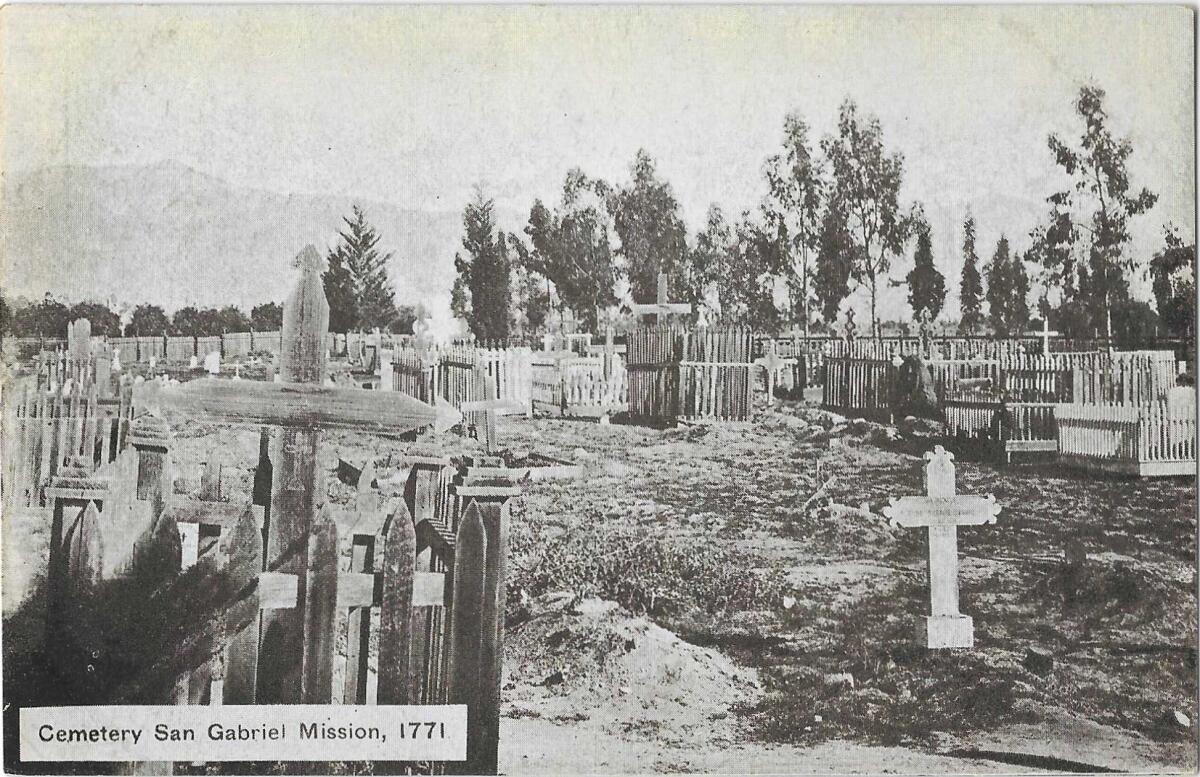‘No Place to Bury the Dead’ is a moving meditation on migration, displacement and loss

Book Review
No Place to Bury the Dead
By Karina Sainz Borgo
Random House: 256 pages, $26
If you buy books linked on our site, The Times may earn a commission from Bookshop.org, whose fees support independent bookstores.
In a fictional town not far from the border of an unnamed Latin American country, a woman named Visitación Salazar has made it her mission to provide a resting place for the unlucky dead — those who have been abandoned or whose families can’t afford to bury them elsewhere. The Third Country, as her unofficial, unsanctioned cemetery is called, should be a place of mercy where the ritual of burial provides comfort. But despite Visitación’s best efforts, it is also a place of violence; the land is owned by a powerful businessman, Abundio, and sought after by the irregulars, a guerrilla army sowing terror and selling heroin to fund its fight against the state.
Into this tense situation comes Angustias Romero, the protagonist of the second novel by the Venezuelan journalist Karina Sainz Borgo, “No Place to Bury the Dead,” translated from Spanish by Elizabeth Bryer. Like the author’s first novel, “It Would Be Night in Caracas,” it revolves around grief and motherhood, only this time from the perspective of mother rather than daughter.
Japanese Americans’ pain over their mass incarceration has been minimized. New essays let them speak
In Brandon Shimoda’s ‘The Afterlife Is Letting Go,’ remembrances of Japanese detention in World War II become an indictment of white supremacy.
Angustias wasn’t supposed to end up at the Third Country. She and her husband left their home in a place described as the eastern mountains to escape a plague of amnesia sweeping their region — echoing a similar epidemic in Gabriel García Márquez’s “One Hundred Years of Solitude” — and leaving the population disoriented and despairing.
“Men went out into the street to wait,” Angustias narrates. “For what? I never found out. We women did whatever we could to keep despair at bay: We gathered food, opened and closed windows, climbed up to the rooftops, swept the patios. We gave birth heaving and shouting like those madwomen whom no one offers even a sip of water. Life concentrated in us, in what we, until then, had been capable of holding on to, or pushing out.”
Women’s strength — terrible, tragic and, in the most dire circumstances, necessary — is emphasized throughout the book. Indeed, it takes much strength for Angustias to leave the plague-ridden place she knows. But she’s concerned about her twin baby boys, born very prematurely and with a heart defect, and hopes that going west will keep them safe.
From the moment our protagonist lays eyes on an older man in Maya Kessler’s ‘Rosenfeld,’ she’s in unrelenting lust. But ... why?
Instead, the babies die soon after they cross the mountains, which is how Angustias winds up searching for Visitación. Once she’s buried the boys at the cemetery, she insists on staying there to be close to them. She earns her keep by mixing cement for the vaults Visitación builds for the dead and, over time, also learns to clean and prepare the bodies for the graves.
The novel’s plot follows the growing existential threat to the Third Country and its caretakers as the cruel, grasping Abundio sends his lackeys after them and the irregulars increasingly make their presence known through threats and violence. The powers converging to get Visitación and her dead off the land are immense. Yet both women stand strong — Visitación out of stubbornness and a sense of divine purpose, Angustias from the grief tying her to her sons’ grave.
Yet the plot isn’t really the point of “No Place to Bury the Dead,” which often dwells on quiet moments of pain, showcasing the small ways a migration crisis robs people of their dignity.

In Mezquite, the town closest to the cemetery, hundreds of migrants wait at city hall to be relocated. In Cucaña, some 40 miles closer to the border, all the women have terribly shorn heads — which Angustias notices because she was a hairdresser with her own salon in her former life — having sold their hair for a pittance. With few other options for raising money, the town’s women turn to sex work, while the girls handle child care and scavenge for things to sell. As for the men and boys, they rarely seem to be of much use.
Sainz Borgo’s depictions have some unsettling dimensions. Visitación, a 60-year-old, evangelical Black woman who drinks, smokes, has several boyfriends and enjoys showing off her body, may read as a caricature to some. Críspulo, an Indigenous farmhand who works for Abundio, is horribly abused but cartoonishly villainous as a result.

At the same time, Angustias’ development is moving, her delicate, quiet steeliness contrasting wonderfully with Visitación’s big, loud, insistent personality. Late in the book, Angustias addresses Visitación’s strangely proprietary relationship with the cemetery inhabitants she refers to as “My dead”:
“There was one and only one truth, and nothing could change it: all these men and women were dead, and they were never coming back. That was the only sure thing, and there was nothing Visitación or anyone could do to change it. The dead were not hers. They did not belong to those who cursed them or longed for them. Not even my sons were entirely mine, even if they were the reason I had remained here.”
This novel ultimately serves as a deeply felt meditation on migration, mourning and the simultaneous entanglement and estrangement of the living and the dead.
Ilana Masad is a books and culture critic and the author of “All My Mother’s Lovers.”
More to Read
A cure for the common opinion
Get thought-provoking perspectives with our weekly newsletter.
You may occasionally receive promotional content from the Los Angeles Times.












